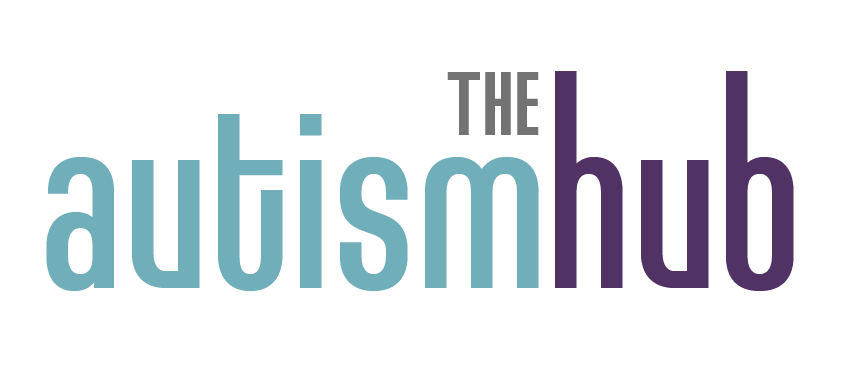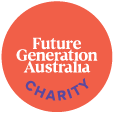Competent communicators have this wonderful tool bag of strategies and different ways to communicate.
An Action Research Project
Project Background
If a message is not met immediately or misunderstood we correct our communication partner by using different words, gestures or finding an alternative way to get the message across. For individuals with complex communication needs and difficulties, the toolbox is often not as full as that of their neuro-typical peers. Not surprisingly, research suggests that a limited communication repertoire is linked with increased communication breakdowns, reliance on familiar communication partners and increased use of challenging behaviour to get a message across (Halle, Brady and Drasgow, 2004). Further (and scarily), some individuals may simply ‘give up’ trying to get their message across and become passive communicators. In doing this, the individual forfeits one of their basic human rights, to communicate.
How do we increase the communication repertoire of an individual with complex communication needs? One piece to the puzzle usually includes developing and teaching forms of Augmentative and Alternative Communication (AAC). At Giant Steps, the focus has always been around developing individualised multimodal expressive communication ‘systems’. Multi modal augmentative and alternative communication is an individualised approach to AAC implementation and focuses on using a range of strategies to support expression, usually using the individual’s strengths and preferences as a guide. Individuals will use the most convenient and efficient method of communication to a get their message across.
The world of AAC continues grow in awareness and accessibility. Where once photos had to be developed at a chemist, pictures drawn or photocopied or large sums of money given in exchange for voice output devices, we now live in a technology savvy world that continues to change what AAC looks like.
A study by Ali, McFarland and Umbreit (2011) investigated a multi modal approach to AAC. They used a multi probe design to evaluate the effectiveness of teaching both real object exchange and picture exchange communication systems (PECS) to improve children with multiple disabilities ability to communicate with a focus on requesting and commenting skills. The authors found positive outcomes when combining the two AAC interventions and also the generalisation of multimodal AAC skills into the classroom environment.
Project Overview
At Giant Steps, a small-scale action research project was completed looking at the way multi-modal AAC was implemented and its ongoing impact in regards to communication breakdowns.
Project Participant
Giant Steps Student Profile – Age 8;4
- Autism Spectrum Disorder with Intellectual disability
- Non verbal- used some babbling with no intent
- Developing communicative intent
- Limited visual literacy skills – understands real objects or remnants only. Working towards understanding LARGE visuals
- Uses hand gestures to point but no other gestures
- Often stood near the object/item and occasionally reached for an adult
- Did not request if item was out of view
- Messages required an adult to interpret and were often missed
Project Design and Strategies
The intervention included two- parts. After setting a goal based on the student’s Individual Plan (IP) and their Expressive Communication Checklist, the first part of the intervention looked at the development and implementation of strategies, including AAC, to support the student’s expressive communication.
Expressive Communication Goal
| Goal | Strategy |
|---|---|
| To request for a motivating item in the classroom 80% of occasions |
|
The second part of the ‘intervention’ was around creating communication repair opportunities by setting up the environment and using a naturalistic approach to intervention, which was provided by the whole classroom team under the guidance and support of the speech pathologist. All intervention was done incidentally and as part of the student’s day.
Strategies included:
- Object exchange of real object
- Referencing and seeking out adult – using hand leading
- Touching/Tapping a Large visual of desired object
Key items (to request) were kept in a routine and known location. Whilst these were initially kept in view of the student, the team gradually and systematically moved the object itself out of view. The supports were in place to ensure success.
Two key strategies were employed: a) adult modelling of communicative request/exchange during multiple opportunities across the day and b) a prompt hierarchy was used to support the student to successfully communicate the message. This included gesture, obvious facial expression, holding out hands, and hand over hand.
Project Results
Figure 1: Number of Spontaneous Communication Attempts
Figure 1 presents the frequency of spontaneous initiation of communication over the data collection period. Notable change occurred in week nine of intervention. The average frequency of initiation each week during the baseline period was 7.6 times per week in comparison to an average during the final 6 weeks was 40.5 times per week. This was an increase of 33 times week.
Table 1: Comparison from Baseline Period to Final 6 Weeks
| Communication Strategy | Percentage of use 6 weeks baseline period | Percentage of use in final 6 weeks of intervention period |
|---|---|---|
| Stand nearby object | 0.0% | 0.08% |
| Reaching for adult | 77.6% | 7.2% |
| Reaching towards object | 20.4% | 6.8% |
| Standing Near object + Reaching for Adult | 0.0% | 34% |
| Touch or Tap object | 0.0% | 7.2% |
| Touch or Tap visual/Picture | 0.0% | 0.08% |
| Picture Exchange | 0.0% | 0% |
| Real Object Exchange | 2.0% | 11% |
| Hand leading to object/picture | 0.0% | 31.6% |
Table 1 outlines the percentage of use of communication strategies. There were significant changes in range of strategies from the baseline period to final six weeks of intervention as well as a shift in the frequency of use of a number of strategies. During baseline, the most frequent strategy of communication was reaching for an adult (77.6%). However, in the final six weeks of intervention this strategy was only used on 7.2% of occasions and the most the frequent strategy used in the final six weeks was hand leading the adult. Student BP also began using real object exchange and demonstrated on 2 occasions the ability to touch a visual of the desired item.
The student’s response to communication breakdown was coded by the researcher into the following categories based on video footage collected by the team:
Table 2: Scoring for Response of Communication Breakdown
| Score | Level of Response |
|---|---|
| 1 | No response |
| 2 | Moves on to another activity |
| 3 | Moves to communicate with another adult |
| 4 | Attempts a second time using same strategy |
| 5 | Uses an alternative strategy to communicate message but is not clear to adult6 |
| 6 | Uses an alternative strategy to communicate message that demonstrates clear intention to the adult. Successful Communication Repair. |
Figure 1: Number of Spontaneous Communication Attempts
Figure 2 presents the response to adult facilitated communication breakdowns. A score of ‘1’ indicates no response and score of ‘6’ is a successful communication repair (refer Table 2). During baseline the average score in response to a communication break was 1.67. The average score during intervention was 4.27. The level of prompting required to achieve a successful communication repair is outlined in Table 3. The most frequent prompts used to support the participant were hand over hand and gestural prompts in order to repair. Initially, full physical prompting was required.
Table 3: Scoring for level of prompting to repair communication
| Score | Level of Prompt |
|---|---|
| 1 | Full Physical Prompts |
| 2 | Partial Physical Prompts |
| 3 | Hand over Hand |
| 4 | Tap or touch prompt |
| 5 | Gesture |
| 6 | Verbal – Adult verbal prompt |
| 7 | Shift in eye gaze |
| 8 | No Prompt |
Project Discussion
Overall we saw:
- Increases in number of communication attempts
- Increases in range of communication strategies used to spontaneously request
- There was an increase in the student’s ability to repair a breakdown.
At the conclusion of the action research the student was able to use hand leading and object exchange to request for an item. If the item was out of view the student was able to use a related item to request. There continued to be some level of prompting to repair and at the end of the study the student was still unable to use visuals to communicate – relying on real objects and hand leading.
Barriers included:
- No data on generalisation outside of the classroom (i.e. if we were on public transport)
- Only one message was targeted in this case study. The message was also highly motivating. Requesting for the toilet… another story!
- Individualised case study – does not represent all students…
- Remember individual students require individual strategies and supports for their individual messages
This project demonstrated the team approach to intervention and importance of a team approach. The speech pathologist was only in the classroom one day a week working alongside the classroom teacher and educator who collected data and provided intervention.

Author
Lucy Vukovic
SPEECH PATHOLOGIST
Giant Steps Sydney
Tags
Resources
Documents and resources providing further support for article.
-
Insert link and text here







